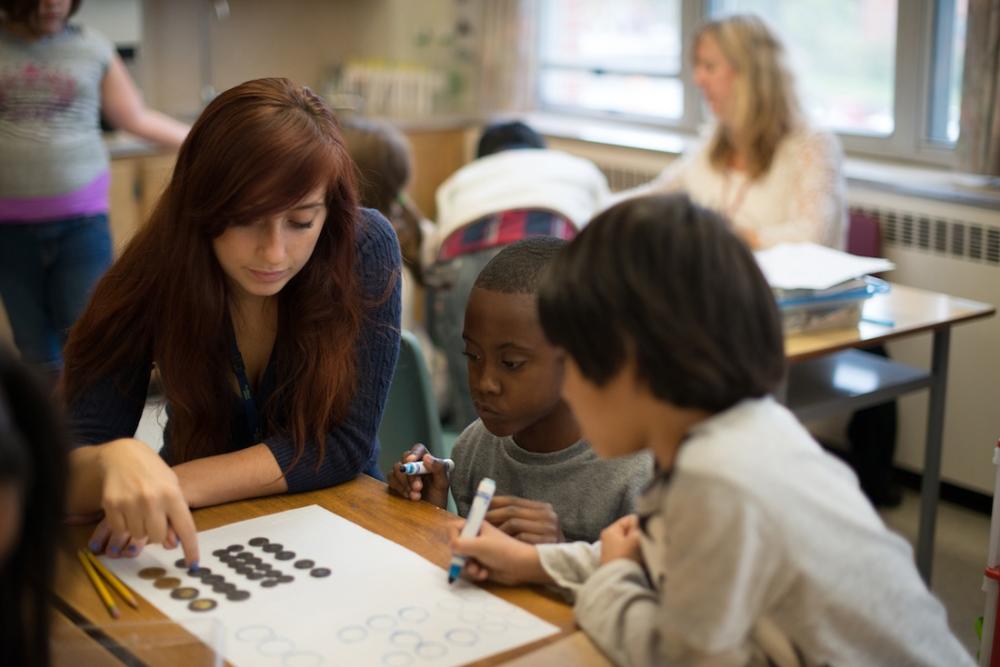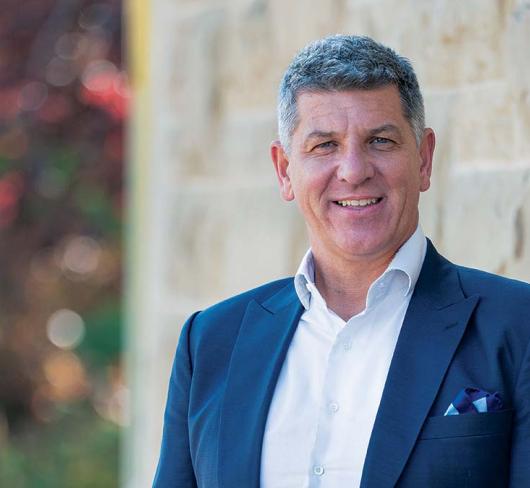
Math Outside the Textbook
Get out much? of the math textbook, I mean. I know that until recently, I didn’t! Even after leaving the classroom for a few years to do a stint as a program resource consultant, and preaching the message of problem-based learning and three-part lesson planning while I was teaching preservice at the university, when I got back into a classroom, it didn’t take long for me to revert to the textbook as my primary and almost exclusive source for math programming.
It wasn’t that I didn’t believe in a constructivist approach to teaching and learning math. But with all the pizza money to collect, report cards to write, monthly newsletters and curriculum updates to send home, guided reading groups to plan, baseline data to enter into the board-mandated school success computer program, and … Well, you get the idea. The textbook was just so tempting. It offered a lesson-by- lesson approach that was relatively simple to follow, especially for a busy generalist teacher with a touch of math phobia! I quickly gave in to temptation.
It wasn’t until last year, when my colleague Dale Trinder and I applied for and were granted a ministry-funded Teacher Leadership and Learning Program (TLLP) project that I once again attempted – this time with considerably more success – to venture beyond the textbook in my mathematical programming.
Our project revolved around endeavouring to use an Interactive White Board (IWB) to teach math, through the use of bansho.“Bansho” is a technical term developed by Japanese teachers, and means “board writing.” It is an artifact that visually documents a problem-based math lesson. It consumes a large amount of board space, so that students can visually refer back to various parts of the lesson as it progresses. (As an aside, we documented our learning, and posted numerous lessons at SmartBansho.weebly.com)
Because we were receiving upwards of $20,000 in funding, and were expected to submit a final report at the end of our year-long exploration, the pressure was on to get to work. This stress was further intensified by the self-imposed removal of the class set of math textbooks from our classroom, and the arrival and installation of two big, shiny Smart Boards only days before the start of the school year!
Thankfully, the vast majority of our funding had been allocated to teacher release time, and my colleague and I had approximately one day every 10 to visit other schools, to read and research, to get a little informal training on the Smart Board, and to develop non-textbook math lessons.
Once forced to examine the actual curriculum and develop math lessons that addressed specific curriculum expectations and catered to the unique needs of our specific group of students, we soon discovered that not everything in the textbook is in the curriculum. Nor is everything that the students in any given class need in the textbook! For example, while “mode” is referred to in the Grade 3 Math curriculum, it is not included in the textbook. Furthermore, I had students in my class whose numeracy skills were considerably below grade level, and in many cases the multi-digit addition and subtraction problems presented in the textbook were decidedly out of reach. Creating our own lesson plans that allowed students to consolidate skills from previous curriculum years helped them begin to meet the expectations of their grade level in a more realistic manner.
As we worked together to look at students’ work, and use ongoing assessment to develop lesson and unit plans for each new topic in the math curriculum, my colleague and I began to build up a much stronger mathematical and pedagogical understanding.
Departing from the textbook meant that we could modify lessons on the fly more easily, or create entirely new lessons in order to respond to what we were seeing in the classroom. For instance, when we developed an oral geometry assessment/mini-conference to complete with each individual student, we were able to use the one-on-one time to confirm what each student knew, and do some intensive, on-the-spot teaching with those who needed a little extra support. I remember the light bulb going on for one little girl as I gently probed her understanding of clock- wise and counter clockwise turns of varying degrees; the comfort she had developed as a mathematical risk taker allowed her to make connections to what she already knew, and to celebrate her evolving understanding of this geometric concept.
One of the things I liked about developing our own lessons was that we could choose the context, and often, we changed names or scenarios to reflect the cultural reality in our classrooms. Apples became samosas, while Halloween parties became Eid or Chinese New Year’s celebrations as we modified problems from other sources. The students were excited to explore math concepts found in their own worlds, and it was clear from their increased engagement that they were able to relate in a way that was different from previous classes I had taught.
Towards the end of the year, we started to venture into more specifically social justice related problems, using picture books and other rich mentor texts as context. My students very much enjoyed the “rich mentor text wall” we created together as we engaged in conversations about a variety of “big” topics from racism to literacy to poverty, inspired by books like Eve Bunting’s The Wednesday Surprise or Evelyn Coleman’s White Socks Only. I could see the connections they made in their writing and in the comments they made during our conversations later in the year as they thought about the world and their ability to effect change in it.
Integrating the mathematics of these big ideas is something I’d like to do with more intentionality in the future. (Currently, my students and I are exploring the math behind the cartoneros (waste pickers) who work the streets of Buenos Aires, where I am teaching this year. And my colleague Dale Trinder has started planting a garden with his class this year; the math generated by this project is rich indeed, and I am looking forward to following the related mathematical developments in his classroom.)
Ditching the textbook forces us to think more holistically not just about the math, but also about opportunities for teaching through the lens of social justice. Without the constraints of a pre-planned program that someone else has developed, we have more opportunity for context-specific instructional creativity.
When I say we got “out” of the textbook, I don’t mean to imply that we threw the proverbial baby out with the bathwater. Current math texts in Ontario offer a number of rich problems, and we often used them as grounding for the lessons we developed. But we also used many additional resources, for example, Marion Small’s Good Questions book, as well as her more recent Eyes on Math, a visual approach to teaching various concepts, co-authored with Amy Lin. We also heavily consulted Van de Walle’s compendiums for K-2 as well as 3-5, and of course, used several of the suggested problems right in the curriculum itself.
Despite the abundance of release time, I confess that we taught some units directly out of the textbook, because we still found that we simply didn’t have the time to develop non-textbook plans for every single concept in all strands of math!
While teaching “freestyle” did not solve all the problems in my math program, being more directly engaged with math as the teacher and personal developer of each math unit, I definitely had a better idea of what the problems were and how I could intervene to help students with next steps. As a whole, the students also seemed to enjoy the math program much more than classes I had had in previous, more textbook-reliant years.
For teachers thinking about stretching their mathematical instruction beyond the textbook, I offer the following considerations:
- Begin by choosing ONE unit to plan entirely “from scratch.”
- Set the textbook aside for this unit, and gather together a few alternate resources (including the curriculum!). Your teacher-librarian or a board program resource consultant, or even a colleague down the hall who’s already been experimenting can help direct you to a few good resources.
- Consider which curriculum expectations need to be addressed for this unit and think about how students will get there (begin with the end in mind); for ELLs and students with LDs, develop a list of necessary vocabulary to pre-teach.
- Develop a set of five or six lesson plans for the unit, including some that can serve as formative assessment checkpoints along the way.
- Develop your lessons in a three-part framework: Minds On (a warm-up or thinking question), Action (the “big” problem for students to work on), and Consolidate/Debrief (taking up the problem as a class, sharing various students’ solutions, assigning a similar problem so that students can apply their new math skills).
- Tell your students what you’re up to: It’s good for them to see you as a life-long learner, and they will become your biggest champions as you slog through the failures and successes of your little experiment!
- Take some time at the end of your unit to celebrate the things that went well, and reflect on why some things may not have gone so well (and what you might do differently next time). Consider asking your students which method of learning math they prefer and why; this can provide clues for improving future instruction.
- Share your work with others, and ask them to share their work with you. Although we found that a lot of our own learning came from developing the lessons and units ourselves, we were constantly aware of the time crunch many teachers – including ourselves – face, and were always grateful to get a great idea from somewhere else that we could easily incorporate into our classrooms.
